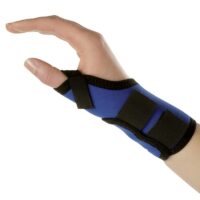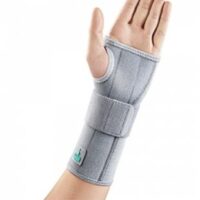Hand & Wrist Pain
Article by John Miller

Hand & Wrist Pain: A Physiotherapist’s Guide to Relief
Understanding Hand Pain
Experiencing hand pain? You’re not alone. This common complaint can stem from various causes, such as joint issues, muscle strains, or nerve compression. The complexity of the hand, with its intricate network of bones, joints, tendons, and muscles, demands a thorough understanding for effective treatment. That’s where physiotherapy comes in.
Early intervention is key. A physiotherapist can offer tailored advice and a targeted treatment plan. They’ll assess your hand, identify the root cause of pain, and guide you towards recovery.
Navigating Wrist Pain
Wrist pain can disrupt your daily life, often arising from sports injuries, work-related activities, or general wear and tear. Conditions like arthritis, tendonitis, or nerve issues like carpal tunnel syndrome are common culprits.
Early assessment and treatment by a physiotherapist or doctor are crucial. They can prevent long-term damage and help maintain muscle strength, sensation, and overall hand function. Remember, most wrist issues respond well to physiotherapy, but in some cases, medical intervention or surgery might be necessary.

Physiotherapy Treatments for Hand Pain
Australian physiotherapists utilise various methods to tackle hand pain:
- Manual Therapy: Beyond just relieving pain and improving mobility, these hands-on techniques also help in releasing muscle tension and enhancing joint functionality, which can be particularly beneficial for those suffering from conditions like arthritis or tendonitis.
- Exercise Therapy: This goes beyond just muscle strengthening. It also focuses on improving fine motor skills and proprioception, which is crucial for hand function. This therapy is especially important for recovery post-injury or surgery.
- Modalities: Techniques like heat/cold therapy, ultrasound, or electrical stimulation not only reduce pain and inflammation but also promote tissue healing and reduce muscle spasms. These therapies are often used as adjuncts to other treatment methods for a comprehensive approach.
- Education: This crucial aspect involves teaching patients about proper hand use and care to prevent future injuries. It includes ergonomic advice for daily activities and work, lifestyle modifications, and self-management techniques for chronic conditions.
With a personalised approach, physiotherapy aims to alleviate discomfort and enable you to resume daily activities pain-free.
Conclusion
Don’t let hand or wrist pain hold you back. In Australia, you can consult a physiotherapist directly without a doctor’s referral. Many health insurance plans cover these services. Take charge of your health, seek professional advice, and embark on your journey to recovery.
What to Do?
If you’re experiencing hand or wrist pain, consult a physiotherapist promptly. They’ll provide an accurate diagnosis, a tailored treatment plan, and the guidance you need to recover and prevent future injuries.
Rochedale - Call 38410277
Book Online: RochedaleSalisbury - Call 32751044
Book Online: SalisburySandgate - Call 32691122
Book Online: SandgateRelated Articles
- Carpal Tunnel Syndrome: This section focuses on Carpal Tunnel Syndrome, a common overuse injury, offering information on symptoms, causes, and physiotherapy treatments.
- Wrist Tendinopathy: This article discusses wrist tendinopathy, covering its causes, symptoms, and treatment options available through physiotherapy.
- Hand or Wrist Arthritis: This page discusses the challenges of hand or wrist arthritis and the various physiotherapy management strategies.
- Common Causes Of Wrist & Hand Pain: This comprehensive section outlines the common causes of wrist and hand pain, including various injuries and conditions, along with their treatment options.
- Wrist Fractures: This article provides valuable information on wrist fracture symptoms, causes, and various physiotherapy treatment options. It’s an excellent resource for understanding this common injury and the rehabilitation process involved.
- De Quervain’s tenosynovitis: De Quervain’s tenosynovitis is a condition that affects the tendons on the thumb side of your wrist. It can cause pain and tenderness, particularly when forming a fist, grasping objects, or turning the wrist.




















































